Author Archive
There seems to be a Disconnect. How can we bridge the gap between patients and providers?
Tuesday, September 27th, 2022
Let’s start today by making a promise between one another.
We’re not casting blame in any direction.
Talking about the medical field these days can feel like tiptoeing through a minefield, as health care professionals who endured the last two-plus pandemic years rightfully demand recognition for their sacrifices and professionalism. Likewise, patients across the board – but especially those who are older or in long-term care facilities – have often felt overlooked and dismissed.
The entire situation has left everyone, patients and providers alike, frustrated and exhausted. Yet too often in looking at the problems and searching for solutions, it feels as though the two sides are talking past one another.
There seems to be a disconnect.
Today we’re going to see what we can do about bridging that disconnect. But we’re not going to say anyone has caused the problem individually or that anyone has set out to create the problem. Medical professionals want to do the best for patients by using all they’ve learned. Those inside the healthcare system want to get better.
So for a first step, let’s lay down our respective arms and deal with one another face to face.
This needn’t be complicated or painful, but it should at least be honest and transparent. Here are three ways the disconnect has erupted before our very eyes and two things we can do about it.
Problem one: The pandemic has reshaped our health care system — for everyone.
It doesn’t matter who you are. You could be a doctor or a nurse. You could be a patient or the family member of a patient. You could be someone who suffered an extreme case of COVID-19 or someone who has managed to go through the last two years plus unscathed.
Regardless, the pandemic has changed you. Back in February, Health Affairs crunched the numbers to show just how much.
Here are their big four changes:
- U.S. life expectancy has dropped by a staggering 1.8 years. And before you say this happened around the world, please note that this change is three times as much as that seen in peer countries.
- Fewer people actually used health care in 2020. They have yet to make up the delayed or missed appointments, with all of the toll on the general population that implies.
- Spending on the sector from consumers and insurers declined for the first time ever in 2020, but robust federal relief boosted the overall sector.
- Finally, most folks experienced telemedicine. While that helped keep some people in touch with health care professionals, we still saw that one in four adults went without care during that time.
What does this mean for health care providers? Stress, stress and more stress.
Doctors and nurses faced unparalleled daily stresses. Government dollars flowed in, then were reduced. Insurers covered some things but not others. The public became sicker and went to fewer appointments, meaning that providers had to deal with more complex cases. And while telemedicine allowed for greater convenience, learning a new platform with new advantages and drawbacks took time and effort.
Problem two: Baby Boomers are putting exceptional new stress on the system.
As we wrote about on this blog back in August, providers in the long-term care field are facing an avalanche of problems in the years ahead.
Some of those problems apply more generally, to all health care providers.
Baby Boomers – one of the largest generational cohorts – are shifting from vigorous late middle age into the elder years.
CNBC reports that the oldest baby boomers will begin turning 80 in just three years from now. Some of those folks will require skilled, round-the-clock care, while others will simply be going to health care professionals more often.
“This is an enormous issue,” said Howard Gleckman, a senior fellow at the Urban Institute, in the CNBC story. “Advances in technology and public health have allowed people to live longer in a condition of frailty, and we haven’t developed a long-term care system to keep up with that.”
Throughout their lives, Baby Boomers have been accustomed to having society move around them, shifting to meet their every whim. They will no doubt expect the same of doctors and hospitals, nursing homes and hospice centers.
They’re coming, and we don’t have much time.
Problem three: Not all patients have been treated equally.
With all of the aforementioned in the air, doctors could be forgiven for trying to do as much as they can, as quickly as they can. Patients need taken care of, demographic shifts need addressing and it all needs done yesterday.
Problems happen, unfortunately, when these health care providers act before thinking. More and more patients are paying attention and noticing when their care falls short, according to a report from the New York Times.
“We know that women, and especially women of color, are often diagnosed and treated differently by doctors than men are, even when they have the same health conditions,” said Karen Lutfey Spencer of the University of Colorado, Denver. She studies medical decision-making.
Patients have seen the pattern repeatedly.
Times reporter Melinda Wenner Moyer offers an easy list for patients to see if their health care providers are gaslighting them. That means ignoring or dismissing what patients say, up to and including suggesting they’re making it all up.
- “Your provider continually interrupts you, doesn’t allow you to elaborate and doesn’t appear to be an engaged listener.
- “Your provider minimizes or downplays your symptoms, for example questioning whether you have pain.
- “Your provider refuses to discuss your symptoms.
- “Your provider will not order key imaging or lab work to rule out or confirm a diagnosis.
- “You feel that your provider is being rude, condescending or belittling.
- “Your symptoms are blamed on mental illness, but you are not provided with a mental health referral or screened for such illness.”
As stated way back at the beginning of this piece, we’re not blaming anyone. Any single health care professional is likely doing his or her best. But you can’t afford to treat patients as obstacles.
Solution one: Give patients the power.
One of the very best ways to address all of the three problems just listed?
Take a step back and let patients have their say.
“I always tell my patients that they are the expert of their body,” said Nicole Mitchell, the director of diversity, equity and inclusion for the obstetrics and gynecology department at the University of Southern California, according to the Times. “We work together to figure out what’s happening and what we can do about it. It really should be a shared decision making.”
That simple advice applies in so many situations for health care providers. If you’re seeing a patient who has avoided medical care since the spring of 2020, take the time needed to listen to their reasoning and how they’ve taken care of themselves in the interim.
If you’re dealing with a surging wave of aging Baby Boomers, similarly, let them outline their concerns. Yes, older folks may have more symptoms and concerns. Let them share their experiences and listen with open ears.
Finally, if patients say you’re not hearing them, stop everything and make sure you do. Don’t just nod and think about your next appointment. Actually take the time. Imagine what you would do if another doctor shared these symptoms, rather than a patient.
If you’re a patient, you have options as well, wrote the Times’ Christina Caron.
“See another doctor if you feel dismissed,” McGregor advised. That might mean finding a physician who is a woman or person of color, someone who might “understand your perspective and language.”
You can also simply try to reframe the discussion you’re having with a health care provider or, if you feel comfortable doing so, appealing to their supervisor.
Solution two: Help is out there for providers as well.
Med Law Advisory Partners understands and appreciates these stresses. We’ve seen the landscape from the perspectives of providers and patients.
“Our medical-legal team is comprised of highly experienced legal nurse consultants and dedicated support staff,” they note. “In addition to a nursing degree, our registered nurses have extensive clinical experience in the areas of acute/critical care, long-term care, health systems management and many specialty areas within the nursing profession. Additionally, 75 percent of our legal nurse consultants carry the Legal Nurse Consultant Certified (LNCC) certification.”
And while Med Law does handle malpractice matters, its goals and knowledge go much further. They also provide executive consulting to hospitals and healthcare systems to identify risks and impact healthcare delivery within the enterprise.
Providers need a trusted partner who understands the changes we’ve all been through, while continuing to put patients first. That’s what Med Law offers.
While there might seem to be a disconnect, we can help connect those pieces for you.
Pennsylvania Malpractice Rule Loosened by State Supreme Court
Tuesday, September 20th, 2022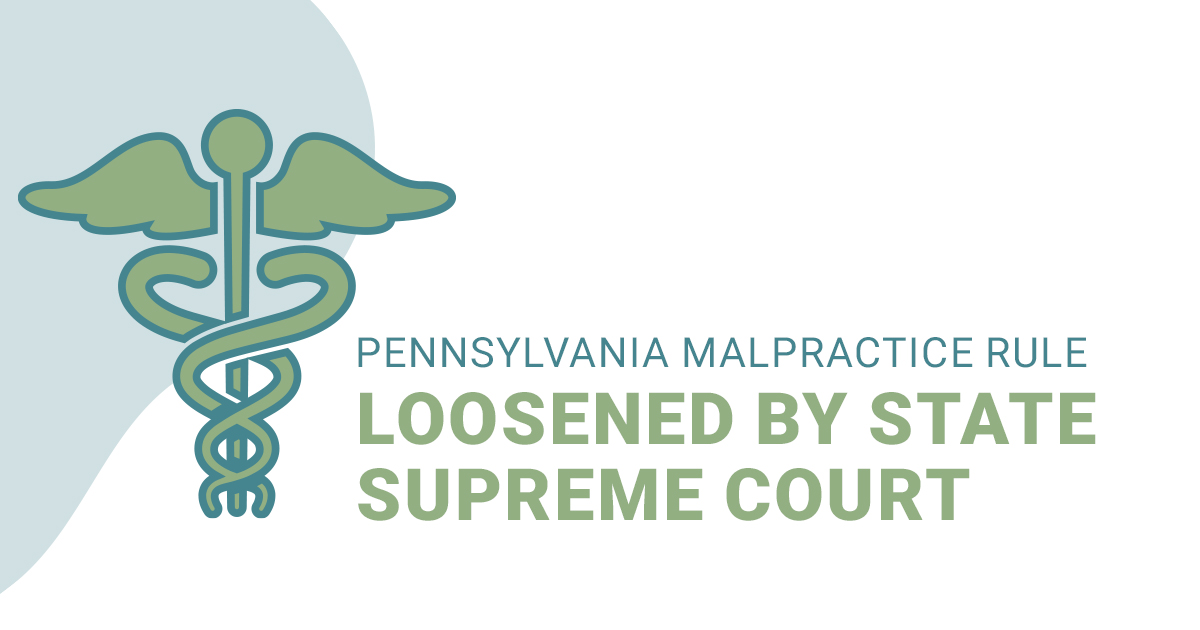
Pennsylvania courts and health care providers are clashing over two fundamental principles: The right to pursue equitable justice and the ability to access quality health care.
At issue: Where do patients pursuing malpractice claims file their cases?
Until recently, they were limited to the counties where the harm allegedly occurred. Health care providers – and every other nongovernmental entity – followed the looser, standard rules of civil procedure. They could file a case in any county within the Commonwealth. A committee set up by the state Supreme Court decided that was unjust and recommended a change.
Here are the top five takeaways from the change.
The committee saw the same as a matter of justice.
While agreeing that there may have been good reasons to limit where the suits could be filed at one point, the Civil Procedural Rules Committee decided they no longer held water. What’s more, they located a fundamental injustice in the arguments of health care providers.
“There appears to be a misconception that patients harmed by the negligent actions of healthcare providers somehow enjoy a windfall verdict in more populous counties,” the committee wrote in its majority report. “Many of these patients have endured substantial injuries seriously lessening their quality of life in perpetuity, requiring permanent medical care and assistance in activities of daily living.”
In other words, while providers may have to grapple with higher malpractice insurance costs or providers leaving, those harmed by medical malpractice bear great burdens of their own.
The committee looked at three pieces of hard evidence.
Jeffrey A. Krawitz at the National Law Review highlighted three factors noted by the committee. Taken as a group, members said, they showed that the time had come for a change in how venues were selected.
- “The court’s own data showed that medical malpractice filings had significantly decreased in the past 15 years.
- “Not only was there a significant decrease in the number of cases filed, but also in the number of claim payments—resulting in less compensation for victims of medical malpractice.
- “The current venue rule provides special treatment for a particular class of defendants, with the soon-to-be-implemented changes providing fairness of process.”
Pennsylvania hospitals aren’t happy about the change.
Andy Carter is the president and CEO of the Hospital and Healthsystem Association of Pennsylvania. He told Ron Southwick of Chief Healthcare Executive that he worried about the malpractice as mentioned above costs, as well as doctors choosing not to work there. That could all ultimately lead to hospitals offering fewer services to fewer people.
“We’re going to continue the conversation pointing to the risk that this rule change puts Pennsylvania in, in terms of access to the healthcare they have now, especially in the climate we now face,” Carter said. “This is as much about the fragility of the healthcare delivery system as whatever a jury award might be. There’s a great deal at stake here for all Pennsylvanians.”
Trial lawyers see it as a long-overdue triumph of fairness.
As you might expect, they see the change as a triumph for the little guy (and gal).
“Plaintiffs in medical malpractice cases shouldn’t be limited by venue rules while the defendant enjoys a home-field advantage,” said Kila Baldwin, the president of the Pennsylvania Association for Justice, according to Angela Couloumbis and Stephen Caruso of Spotlight PA. The association represents trial lawyers in the Commonwealth.
“The new rule levels the playing field and will improve access to justice for all Pennsylvanians,” Baldwin added.
Keep your eye on city centers to figure out what happens next.
So what does this all add up to for Pennsylvanians? The Associated Press suggests that potential litigants will hightail it to major population centers.
“The decision by the state Supreme Court is likely to mean the number of such lawsuits will increase in Philadelphia and Pittsburgh, where jurors are considered to be more sympathetic to patients and more likely to produce larger verdicts,” Mark Scolforo wrote for the news service in August.
Whether that exodus occurs or not, it’s clear that Pennsylvania’s highest judges have decided that the time has come for a profound change in the state’s malpractice litigation landscape. It will be up to health care providers, their lawyers, litigants, and their attorneys to figure out what that means in practice.
Seven Lessons in Leadership for Healthcare Professionals and Organizations
Thursday, September 1st, 2022
Health care doesn’t work like other professions or industries. Errors and mistakes have direct consequences on the lives and well-being of patients – not in some metaphorical way, but in the literal, immediate now.
That’s the focus and passion of Alicia Davis.
As the president and CEO of Med Law Advisory Partners, she draws on her extensive nursing, legal and leadership experience to guide health care professionals. Here are seven lessons she offers to those in the field.
Be proactive.
COVID-19 has walloped the healthcare field. Government requirements and regulations have continually shifted, based on whoever wields power from Washington, D.C. The result?
“Healthcare professionals and organizations have been forced into a reactive mode in many cases when dealing with claims, only digging deep when necessitated by the prospect of looming litigation,” Alicia says. Leaders can overlook what’s going on all around them. Insights might lurk in while managing that very litigation.
Alicia says that by staying stuck in tunnel vision, they’re “foregoing legitimate opportunities to strengthen current quality and risk initiatives in an effort to impact patient outcomes ‘real-time’ and potentially the frequency and value of claims in the future.”
Ask ‘why’ … then ask ‘why’ again.
Med Law Advisory Partners has seen time and time again that this reactive mindset damages care in multiple ways. As just noted, it means up-to-the-moment information might be overlooked. But it also discourages deeper reflection.
“Dig deeper and discuss specific exposure areas — helping the clinical team understand the WHY, not just the first why,” Alicia advises. “It’s not enough to report on instances of ‘failure to properly monitor’ or ‘pressure injury,’ as we see in many loss run reports, for example.
“What specifically happened? Was there a lack of appropriate staffing during the resident’s change of condition? Was there temporary staff on the unit unfamiliar with facility policy? Was there an EMR glitch that didn’t capture a wound consult referral?”
Clinicians can make life-saving changes if you ask these questions. But you have to have the courage and persistence to ask them.
Determine when something is a reason or an excuse.
Yes, Alicia knows this sounds like a lot. She understands that you and folks on your team may believe you have abundant reasons to avoid such reckonings. But are these really reasons, or excuses preventing a difficult reckoning?
“You may think, ‘I don’t have the time, the resources, or the budget to take on a new project, let alone the expertise to aggregate data.’ I know. I’ve been there and I’ve sat across from leadership teams that tell me the same thing.”
Med Law, however, has a process that has worked repeatedly and effectively with its clients. Step by step, the team analyzes claims and medical records, asks the difficult questions, shares information throughout varying information silos and produces reports explaining what they learned.
As W. Edwards Deming noted, “Without data you’re just another person with an opinion.”
Be creative.
An analogy explains this directive perfectly.
“If a patient presents with a persistent cough, most practitioners would be remiss to simply provide a cough suppressant and send them on their way. Looking at individual claims in a vacuum is like only looking at one symptom; we miss the larger diagnostic picture,” Alicia points out. “Or, if a patient presented with chronic headaches, we wouldn’t spend the next two years monitoring the research for up-and-coming treatments instead of treating the patient in front of us.”
The point is, too often individual claims are looked at one-by-one, rather than taken as a whole. Like the canny physician, those running health care institutions should examine the entire situation and think creatively. What’s happening in the environment of the person coughing? Does the patient with chronic headaches have a short door they continually bang their head against?
Focus on the step in front of you.
Health care leaders have to manage a lot right now. They have to manage during a pandemic. They have to deal with persistent staffing shortages. They have to deal with lagging government reimbursement. But the only way out, as the saying goes, is through.
“With a burdensome regulatory environment, complex legal issues, quality and safety performance, financial sustainability, and a precious workforce that is more stressed and vulnerable than ever before, organizations must be able to manage multiple priorities simultaneously,” Alicia says.
Look at the big picture.
There’s another good reason for leaders to tackle one issue at a time. Things won’t likely get better soon, which means being realistic about each successive step.
“Given the industry’s current state, healthcare organizations will likely not be able to significantly impact their shortage of staffing and resources in the short term,” Alicia says. “Everyone is doing more with less.”
That means using a framework to comprehend the problems and issues we all face, comparing it with our current efforts, and seeing where the gaps are. Then we take immediate and forceful action.
Remember our why: the bigger big picture.
And why do we take that action? Because our business is, when you get right down to it, about taking care of people. We take care of patients, our staff members and the communities in which we work. If we lose sight of that biggest big picture, we risk losing everything.
Or as Alicia says: “We have the opportunity to improve ‘the way we’ve always done it’ with the goal of driving down the cost of care delivery, increasing clinician satisfaction, building more efficient systems, and, ultimately, having safer, healthier patients and communities.”
That’s a goal that all of us can hopefully get behind. That’s why Med Law Advisory Partners stands ready to help you and your organization apply these lessons every day.
Long-term care? In this economy? A clear-eyed view of challenges for the nursing home industry and what we can do about them.
Wednesday, August 17th, 2022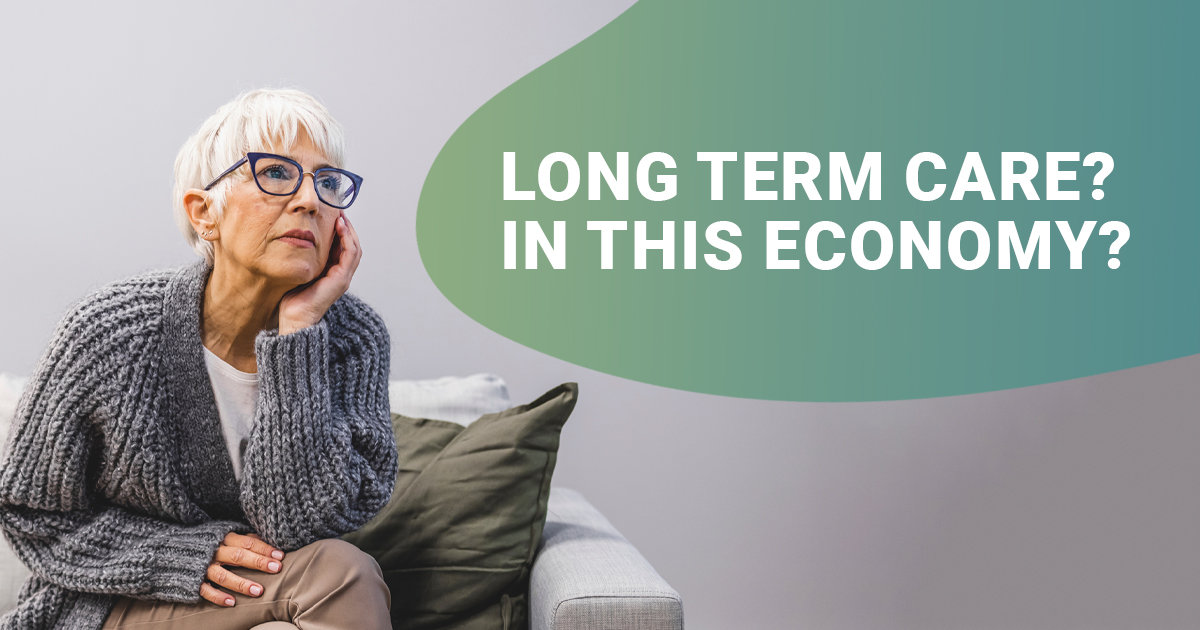
Those working in long-term care could be forgiven for wondering just what they did to make the universe so angry. Budgets were already tight and staff stretched thin before the COVID-19 pandemic hit. Everyone suffered in the maelstrom that followed, and those working in the field held on by the skin of their teeth.
With the pandemic finally tamed by vaccines, antivirals and immunity (not to mention a fair amount of apathy), it’s time to move on to a bright tomorrow, right? Wrong. The post-acute sector faces enormous obstacles in the years to come. If you thought it was bad before, the challenges to come might make you positively nostalgic for face masks.
Here are five upcoming obstacles, along with two ways that you can manage them in these uncertain times.
Obstacle 1: Ready or not, baby boomers will place astonishing new pressure on the system
According to CNBC, the oldest baby boomers will start to turn 80 in 2025, also known as three years from now. A gigantic demographic cohort will enter an age range in which many require skilled care in nursing homes.
“This is an enormous issue,” Howard Gleckman, a senior fellow at the Urban Institute, told CNBC. “Advances in technology and public health have allowed people to live longer in a condition of frailty, and we haven’t developed a long-term care system to keep up with that.”
Financial pressures could be overwhelming. Some 45 percent of the demographic don’t have anything saved for retirement, and of those who do, more than a quarter have less than 100,000. Meanwhile, the average annual cost for a nursing home room was $102,000 — in 2019.
Obstacle 2: The Supreme Court could open up government-owned nursing homes for greater liability.
If you think this nation’s court system will come to the rescue, you’re mistaken. As a matter of fact, the U.S. Supreme Court may be preparing to make everything much worse.
As Med Law Advisory Partners shared this summer, Talevski v. Health and Hospital Corporation et al. could upend the nursing home legal landscape by allowing plaintiffs to pursue cases based on federal law, not just state rules.
We wrote in June that: “Court watchers note that if the Supreme Court agrees with the 7th Circuit, the result could be financially onerous for government-owned nursing homes, especially because these lawsuits could result in significant verdicts against nursing homes that are outside of any statutory damages caps, plus the award of attorneys’ fees.”
Of note: The government owns 1,007 facilities, and half of them are in Indiana. So the Hoosiers among us will want to pay attention.
Obstacle 3: More False Claims Act investigations could be coming down the pike, putting everyone on high alert.
Speaking of the federal government, the Justice Department has recently taken an interest in long-term care facilities.
A June 22 post at JD Supra outlines what the department is doing. It’s “increasingly utilizing substandard quality of care as the basis for False Claims Act cases as part of the National Nursing Home Initiative launched by the DOJ in March 2020. Last year alone, the federal government collected over $5.6 billion in recoveries under the False Claims Act.”
Med Law outlined the issue and its implications for readers in July. To summarize, the government argues that facilities providing substandard care are making a false claim when filing for government reimbursement. Given the variety of laws and regulations that apply to long-term care, that could open providers up to liability in unexpected — and expensive — ways.
Obstacle 4: States are already being battered by nursing home closures, with more on the way.
Beyond demographic changes and unpredictable government actions, nursing homes grapple every day with familiar problems. Staffing shortages and high costs have become just another part of the landscape.
Unfortunately, even familiar potholes can still wreck your car.
McKnight’s Long Term Care News reported in August 2022 that Montana has seen seven nursing homes close in six months, meaning a total of 10 percent of beds in the state have vanished into thin air. That’s part of a national trend, with 1,000 facilities closing over the past seven years.
“The workforce shortage was exacerbated by the pandemic,” Rose Hughes, executive director of the Montana Health Care Association, told McKnight’s. “The shortage means large increases in wages, benefits, bonuses and other incentives, as well as a significant increase in the use of high-cost agency workers. It also means that facilities are turning away people who need care, because they can’t find or afford enough staff to provide care.”
Replacing these lost beds won’t be simple or even viable, given the state-by-state challenges. And as we saw at the beginning, upcoming demographic changes will only increase demand. What will happen to older folks in Montana?
Obstacle 5: Think you have a workplace shortage now? The government is looking carefully at payments.
Speaking of retaining staff, the government has added another wrinkle to the situation.
McKnights covered the entire mess last month, and while the particulars involve the wild and wooly world of Medicare pay rights, here are the basics. The government created a new pay system in 2019.
“After its debut, however, providers and regulators alike quickly suspected that federal payments were more generous than the system’s budget-neutral stipulation called for,” Danielle Brown wrote. “But five months into PDPM’s implementation, the full force of the pandemic hit, throwing the U.S. healthcare system into a state of uncertainty it had never before encountered. Any plans to readjust PDPM payments were indefinitely postponed.”
The government, being the government, has decided it wants that money back. After proposing to do it all in one year through cuts, it listened to the industry and decided on a two-year phase-in. An overall increase in funding means that the reduction ultimately won’t sting the way it could have.
“Thousands of providers, lawmakers, and stakeholders shared how a swift cut to Medicare would be detrimental to our nursing home residents and staff, and we are grateful that CMS listened and made the necessary changes,” said American Health Care Association President and CEO Mark Parkinson.
That won’t be the last time the government tries trimming nursing home payments.
Solution 1: Take a long, hard look at your long-term needs
We’ve gone through the challenges and potential challenges.
Now it’s time for some self-reflection. Think about how you and your organization fit into this sometimes scary landscape.
Don’t tell yourself happy stories about the future and assume all will work out for the best. Now’s the time to take all of the above into account and make a serious appraisal of your long-term care facility. Are you ready to face the challenges? Are you already nearly underwater? What are you worried about today, tomorrow and a few years from now?
These issues should only escalate as time passes. A clear-eyed appraisal of the American political system would suggest that an overhaul of our health care system won’t come anytime soon (not that it would be guaranteed to solve the problem in the first place).
Solution 2: Find an experienced partner to help you navigate this forbidding landscape.
Yes, it’s a lot to take in right now. Nursing homes and all those who help them serve patients and prosper financially have gone through one wringer, with more wringers promised.
Yet Med Law Advisory Partners stands ready to assist. They have deep experience in reducing risk, improving patient care and helping facilities look out for their bottom line.
As they state, their “team has worked with owners/operators of senior-living care facilities for over 20 years, helping mitigate risk and manage claims. Med Law consultants have extensive expertise working in direct patient care and administration in long-term care facilities, contributing an unparalleled depth of knowledge of issues and guidelines unique to post-acute care claims.”
That depth of knowledge makes a difference. Long-term care facilities might not be able to make the universe less angry at them, but they can take common-sense measures to fortify themselves and provide the best possible care, while taking care of their employees and managing costs.
Five Things to Know About Health Care Silos and How They Harm Both Patients and Organizations
Thursday, August 11th, 2022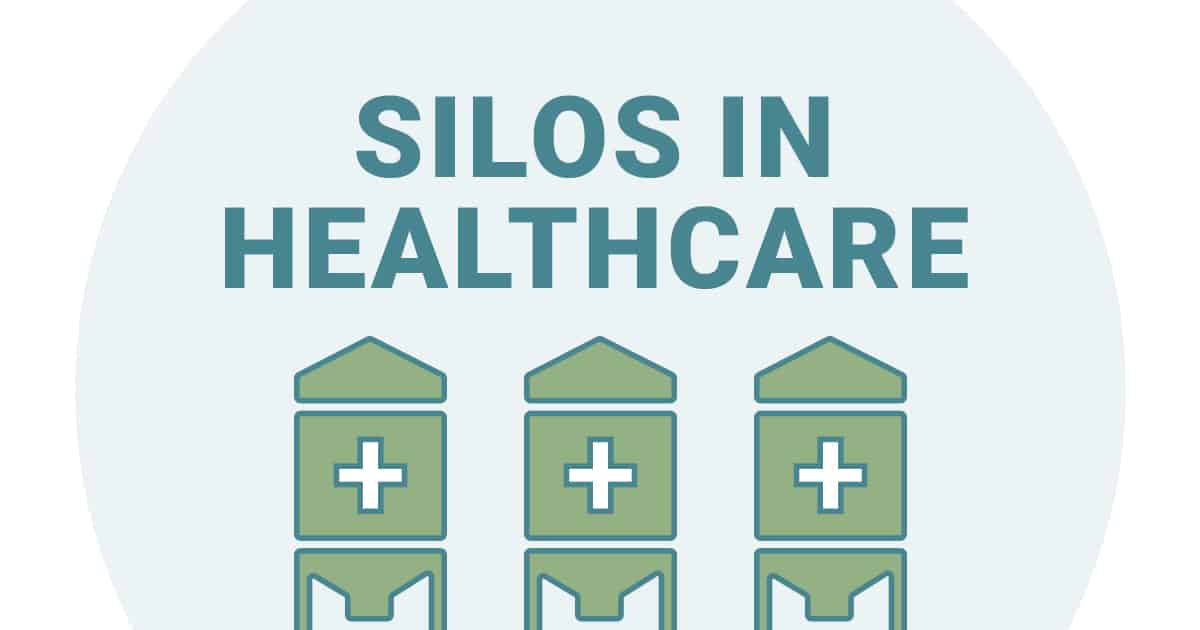
A health care enterprise involves dozens of teams and specialties, from those providing care to those handling administration to those providing legal services. Unfortunately, too often, those teams and specialties cluster together without communication and input between one another.
They’re siloed. Apart. Disconnected. Working toward their own goals without fully understanding what others are doing.
Here are five things to know about silos that develop in the health care industry, along with the toll they exact and the benefits we all could achieve by breaking them down. (How do you actually break them down? That’s another conversation.)
Horizontal relationships matter just as much as vertical ones.
Laurence Sperling is chairman of the World Heart Federation group on the Roadmap for Cardiovascular Disease Prevention among People Living with Diabetes and a professor in preventive cardiology at Emory University School of Medicine. He outlined the difference between horizontal and vertical relationships for the World Economic Forum.
“People always tend to prioritize vertical relationships in their day-to-day job – that is, relationships with their boss, and direct reports,” he wrote. “Yet … companies with more horizontal collaboration achieve greater customer loyalty and higher margins. In healthcare, the same principles are true. It is in the horizontal communication space – expert to expert, department to department – that real gains in both patient outcomes and economic savings can be found.”
What are your workplace relationships like? Are they mainly vertical? Or does your employer emphasize efforts to communicate horizontally?
It doesn’t just hurt the organization. It hurts patients and workers.
While we usually look at the problem of health care silos from an organization-wide perspective, it creates real problems for the individuals inside it, writes Raquel Meneses and João Caseiro of Portugal’s University of Porto in a unique academic paper on the topic. Patients and providers bear the brunt, meaning the pressing health care problems don’t get solved and dedicated professionals encounter friction.
“Silo mentality compromises the efficiency of the organization and promotes conflicts, redundancy and waste. It distresses and demotivates the employees and frustrates clients who receive worse care and do not have their problems solved on time,” they write. “Silo mentality in healthcare can be defined as the set of individual or group mindsets that can cause divisions inside a health organization and that can result in the creation of barriers to communication and the development of disjointed work processes with negative consequences to the organization, employees and clients.”
In other words, you might easily underestimate how destructive this siloed mentality can be in health care. It takes a profound toll that can easily escalate.
The costs aren’t just about feelings. They also cost us financially.
Can this toll be estimated in dollars and cents? You bet it can.
Vikram Savkar, an executive at the Medicine Segment of the Health Learning, Research & Practice business at Wolters Kluwer, shared an alarming estimate: “One study from 2019 in the Journal of the American Medical Association estimated the waste in healthcare expenditure due to failure of care delivery, overtreatment, or low-value care ranges from $178B to $268B annually.”
That suggests the waste from siloed thinking could easily exceed a trillion dollars over five years, and two trillion dollars over a decade.
Break down the silos? You can save money and improve patient care.
On the other side, we don’t just see a reduction in waste. We see the promise of actual savings in providing health care to patients. In a Harvard Business Review article, Yvelynne P. Kelly, Diane Goodwin, Lisa Wichmann and Mallika L. Mendu describe efforts in dealing with end-stage renal disease.
Their coordinated program includes “dialysis units, hospitals, primary care providers, and others” and has seen encouraging results. Emergency room visits are down, and transplants have been arranged.
Strikingly, “by reducing healthcare utilization and facilitating transplantation, we’ve thus far saved twice the amount that it costs to run the program,” the authors write. “In one slice of the data, we calculated $428,000 in savings from 74 avoided ED visits and 34 avoided admissions, and over $1 million in savings attributable to facilitated transplantations.”
What’s more, we can focus on treating the whole patient, not individual problems.
All of this brings us, finally, to the patient. Kam Reams and Alan Little point out in Becker’s Hospital Review that “episodic approaches to care delivery interfere with overall care by ignoring the totality of an individual’s health, leading to duplication of services and increased costs. Reimagining the healthcare system to focus on holistic approaches requires a more open exchange of information and shared accountability. Shifting to a holistic healthcare system will break down the operational silos that are inherent to episodic care and support higher quality collaborative care.”
If you want to learn more about the benefits of dissolving the silos between your health care and legal services team, as well as how your organization might tackle the challenges, get in touch with Med Law Advisory Partners. Med Law has the extensive experience needed to show how you can break free of bad habits and put staff and patients first — all while reducing waste and saving money.
Four Questions and Answers About the False Claims Act and Nursing Homes
Wednesday, July 27th, 2022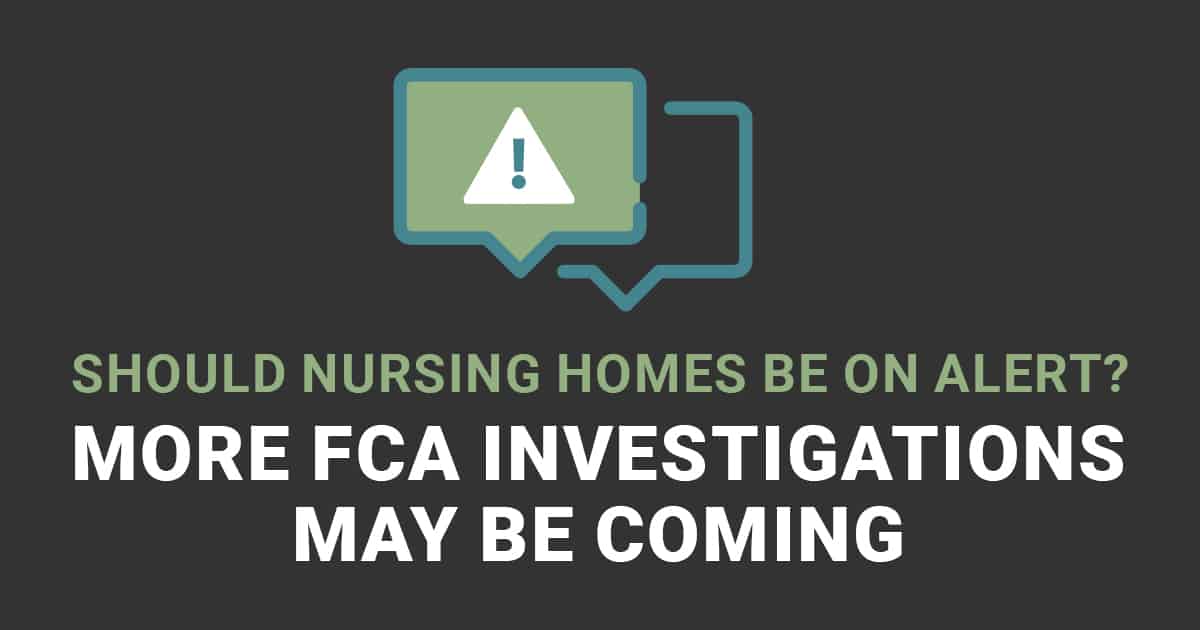
The Justice Department has put nursing homes across the nation on notice: It has a False Claims Act, and it’s not afraid to use it.
The federal government’s law enforcement arm has filed suit against the American Health Foundation, the connected AHF Management Corporation and three nursing homes. One is in Philadelphia, and two are in Ohio.
“Nursing homes are expected to provide their residents, which include some of our most vulnerable individuals, with quality care and to treat them with dignity and respect,” said Principal Deputy Assistant Attorney General Brian M. Boynton, head of the Justice Department’s Civil Division, in a news release. “The department will not tolerate nursing homes — or their owners or managing entities — who abdicate these responsibilities and seek taxpayer funds to which they are not entitled.”
Curious about what’s going on? Here are four quick questions about the legal action and what it means for you.
What’s being alleged here, anyway?
According to reporting from the Philadelphia Inquirer, the DOJ is following up on an earlier fine against the Philadelphia nursing home with the suit adding the Ohio locations. They’re playing “for even bigger stakes with a False Claims Act lawsuit, filed June 14 in Philadelphia,” writes reporter Harold Brubacker.
“The suit alleges that staff neglected patients for years and allowed them to live in a pest-infested building while AHF, which collected millions in management fees from Cheltenham, applied relentless pressure to cut nursing costs.
We should note here that AHF denies the allegations and says that it is proud of the care provided.
That wasn’t what the Inquirer reporter heard from everyone, though. “This is a really bad place,” said Toby Edelman, senior policy attorney in the Washington office of the nonprofit Center for Medicare Advocacy. “I couldn’t read it (the 144-page civil complaint). I started getting so agitated.”
What’s the government doing and why?
According to a June 22 post from JD Supra, this Justice Department has taken a new direction over the last couple of years. It’s “increasingly utilizing substandard quality of care as the basis for False Claims Act cases as part of the National Nursing Home Initiative launched by the DOJ in March 2020. Last year alone, the federal government collected over $5.6 billion in recoveries under the False Claims Act.”
The concept at work here is simple. The government contends that a provider submitting claims for substandard care has violated the act. When you make a claim, you’re certifying that care follows a whole passel of laws and regulations—saying one thing when you want to be reimbursed but providing something else to patients? You just might be making a false claim.
Besides the humiliation of being sued by the government, fending off one of these claims could also be costly in the short and long terms.
According to the post, “providers can be liable for three times the amount of reimbursement plus a civil penalty ranging from $12,537 to $25,076 per claim as well as face potential criminal penalties and exclusion from participation in government health care programs.”
What else do I need to know?
Brenna Jenny and Francesca Ozinal writing for Original Source: The Sidley Austin False Claims Act Blog, False Claims Act case focuses on three areas.
- General care deficiencies: They note that the complaint says the facilities in question were “an outlier on several CMS quality measures, which are metrics that CMS has designated as potentially useful in evaluating nursing home performance.” The department says that because nursing homes know their scores, they could have figured out they were outliers and taken action to fix the problem.
- Staffing: The authors acknowledge that federal regulators don’t require particular staffing levels. On the other hand, “the White House earlier this year called on CMS to develop and implement such standards.” The complaint looked at circumstantial evidence to suggest there were such problems, including email messages and low CMS ratings.
- Prescription drugs: Administration of unnecessary and excessive prescriptions to residents were criticized, with the DOJ highlighting reports from outside experts that the drugs were administered “at two to three times the state average.” This follows the White House guidance: “CMS will launch a new effort to identify problematic diagnoses and refocus efforts to continue to bring down the inappropriate use of antipsychotic medications.”
How can Med Law help me?
With a rapidly changing legal landscape and pressure from the federal government, nursing homes should be aware of their risk while caring for residents. This is where Med Law Advisory Partners can help.
Med Law can be a vital partner in helping defend worthless care claims if your facility faces a False Claims Act investigation. For years, the Med Law team has worked with their clients to challenge FCA allegations and develop demonstrative evidence supporting “the good care” being provided in long-term care facilities. Med Law can also analyze cases during litigation to determine areas of vulnerability and provide guidance to strengthen the reliability of your systems and improve resident outcomes. Get in touch with the Med Law team today to see how they can help you face the future with confidence.
Three Giant Steps to get the Most Out of Nursing Home Litigation Budgets
Wednesday, July 20th, 2022
The numbers tell a clear and convincing story.
With headlines about inflation, conflict on foreign shores and gods of Thunder on the silver screen, the COVID-19 pandemic has faded from public view. But the first institutions in American life struck by the virus — its nursing homes — haven’t yet moved on from crisis mode.
Even if they wanted to.
A new American Health Care Association survey outlines the serious staffing and economic problems still coursing through the hallways of America’s nursing homes. As a result, operators are losing money, employee shortages are limiting admissions, and both have led to fears that some providers may have to close altogether.
“The survey shows the severe and persistent workforce shortage nursing home providers have been facing with too many facilities still struggling to hire and retain staff despite making every effort,” said Mark Parkinson, president and CEO of AHCA.
The association is urging lawmakers to prioritize funding for long-term care residents and staff. Their voice is just one of a chorus calling for reforms in the industry. Patients and families, many of whom have been buffeted by the same external forces, have also been speaking up.
“As a provider that uniquely relies on government funding, policymakers must help nursing homes better compete for nurses and nurse aides, as well as build up the pipeline to incentivize more people to pursue a career in long term care,” Parkinson added.
Here are three big steps to understanding the current crisis and making sure your litigation budget — and overall operations — can meet the moment.
Understand where we are now.
The survey mentioned above offers vital data in understanding the current state of the nursing home industry. It collected responses from 759 providers to quantify the impact and challenges post-acute care providers are facing.
According to the AHCA:
— 60 percent of nursing home providers said their workforce situation has worsened since January. The survey results came out in June, so this change has occurred over a matter of months. It’s also happened since the arrival of vaccines and therapeutics for COVID-19, so we can’t solely blame the virus. People are leaving the industry, even after the worst of the pandemic.
— 87 percent are currently facing moderate to high staffing shortages. Of those, nearly half (48 percent) are facing a high level of staffing shortages. In other words, nearly nine in 10 providers are dealing with significant staffing problems. With surging employment levels reported throughout the economy, we’re in an environment where workers are calling the shots. Many employers haven’t experienced a situation like this. Ever.
— To adjust for staffing shortages, nearly all (99 percent) nursing home providers ask staff to work overtime or extra shifts. More than 70 percent have hired temporary agency staff. To cope with the situation, these providers are putting more pressure on their existing staff and looking outside for help. Trying to patch up these problems comes at a steep price, of course, and may lead to even more people leaving their jobs.
— Providers estimate that their costs have increased by an average of 41 percent since last year. As a result, inflation has buffeted households and businesses alike, and relentless upward pressure on costs has hit the nursing home field as well. Plus, there’s no better way to attract workers than offering them more money.
— More than half (53 percent) of nursing home providers said they can’t sustain current operating pace for more than one year. Here’s where the rubber meets the road. To move forward successfully, nursing homes, their staff and patients must change. Some of that may depend on extra resources from the government, as outlined by Parkinson. It will also depend on providers maximizing their budgets for care and safe guarding against potential litigation.
Glimpse where we’re headed legally.
If the picture painted by the AHCA survey sounds alarming, the upcoming litigation landscape for nursing homes is the equivalent of a three-alarm fire.
Alarm one: The Wall Street Journal reports that a tidal wave of potential lawsuits is approaching. Reporter Jacob Gerhman took stock of the landscape back in April, and even then, the signs were ominous for the industry and those working within it.
“The surge of suits, spurred by a repeal of liability protections and statutory deadlines to file the suits, largely accuses nursing homes of failing to properly curb the spread of disease, identify infected residents and treat their illnesses,” he wrote.
He noted, however, that exact liability could be difficult to discern: “It is now up to courts to decide just how much blame should be laid on the owners of the facilities. Legal observers say it could be hard for the estates of deceased residents to prove a causal link between alleged lapses in infection control and the deaths of an aging, frail population.”
Alarm two: a California appeals court has just allowed a wrongful death case to move forward against See’s Candies. Arturo Ek of Los Angeles died after his wife brought the virus home; she alleges that she caught it at work.
Danielle Brown reports for McKnights Long-Term Care News that implications are apparent — and worrying — for nursing homes.
“The ruling is concerning for businesses, including long-term care providers, in that it definitely expands the range of individuals that could potentially file a take-home COVID-19 lawsuit,” said Craig C. Conley, a shareholder with Memphis-based law firm Baker Donelson, in the story.
He added that “this is particularly concerning in states, such as California, that do not have immunity statutes or other protections in place for businesses such as long-term care providers.”
Alarm three: Amy Stulick writes in Skilled Nursing News that lawyers are looking to test the protections offered by legislation against nursing home suits. The federal Public Readiness and Emergency Preparedness (PREP) Act, which “ provides immunity from liability, with the exception of willful misconduct, from certain legal claims,” does offer some protection.
But as Alan Schabes, partner at Benesch Friedlander Coplan & Aronoff LLP, told the outlet, that doesn’t necessarily mean that state courts won’t be asked to rule.
“If there isn’t a ruling that makes it very clear federal preemption exists in these cases, Schabes said, “it’ll just open things up tremendously” and overwhelm state courts with cases.
Take steps to support your operations.
Where we are and where we’re headed might raise alarms. You might smell some smoke, even if you can’t see any flames yet. But there are tangible steps you can take to address the situation. Maybe you don’t need emergency responders quite yet, but you could use a good fireproofing.
Med Law Advisory Partners stands ready to assist. Its experts offer “the clinical expertise necessary to mitigate risk, manage medical-legal claims, and advise toward long-term operational enhancements.”
How can they help?
Early claims analysis can save money in the long run. Engaging consulting nurse experts can save time and expense by helping tee up cases for the legal team. You can even right-size your litigation budget by collecting data that can provide insights into improving resident outcomes.
What’s more, Med Law has specialized knowledge about the needs of long-term care facilities. They have worked in the field for decades and understand the specific challenges you face.
“Through in-depth medical records analysis and collaboration with our clients, our team identifies critical factors to help defend or support allegations of negligence or malpractice in regards to nursing home litigation investigation and case preparation,” they write. That knowledge can be put to work for you.
Their experts realize that making nursing homes and assisted living facilities work for owners, staff and residents means juggling multiple priorities. You have to figure out how to make every dollar do the work of two. But they also know you can’t cut corners when it comes to keeping residents safe and secure.
“We partner with health systems to bring unique expertise that is highly cost-effective and cost-saving in an era where both quality of care and financial stewardship are critical priorities,” Med Law adds.
Yes, the current state of affairs is distressing enough. Yes, everyone in the nursing home industry could face even greater obstacles and struggles within the next few months and years. But fully grasping the situation isn’t about being alarmist.
It’s about being prepared.
Get in touch with Med Law today and learn how you and your litigation budget can go further. Your staff and residents will benefit.
New research shows that more nurses on the job means fewer sepsis deaths. Are you prepared to do what it takes?
Wednesday, July 13th, 2022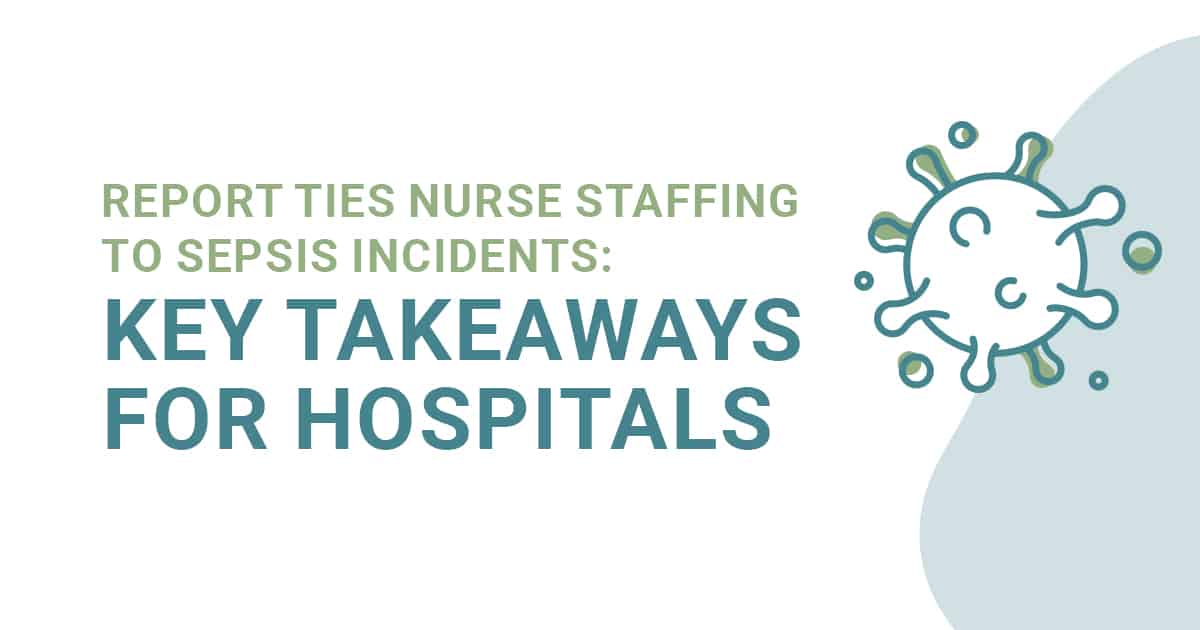
The health care field grappled with unparalleled challenges during the COVID-19 pandemic. Of all health care providers, nurses have faced some of the greatest and most persistent obstacles — overtime demands, risks of illness and surly patients. All of the above have contributed to burnout and widespread staffing vacancies.
A new report shows those shortages have profound effects, beyond the obvious difficulties of keeping hospitals and doctors’ offices running.
Published in the May issue of the JAMA Health Forum, “Association of Registered Nurse Staffing With Mortality Risk of Medicare Beneficiaries Hospitalized With Sepsis,” outlines how the number of nurses on duty affects deaths from sepsis – that extreme, body-wide reaction to infection.
“Based on our analysis of hospitals and patients nationwide, the study findings suggest that nurse workload is an overlooked and underused aspect of the treatment bundle for patients with a diagnosis of sepsis,” researchers wrote while discussing the data.
Here are three main takeaways from the study and what they mean for you.
The numbers tell a clear and convincing story.
Mark Twain may have said there are three kinds of lies: lies, damn lies and statistics, but the results from the study were anything but vague and open to interpretation. They show beyond a doubt that survival from sepsis improves with more nursing care.
Victoria Bailey from RevCycle Intelligence pulled out some of the most noteworthy findings.
- The odds of 60-day sepsis mortality dropped by 3 percent for “each additional registered nurse hour per patient day.”
- If hospitals ensured that each patient day had at least six registered nurse hours, that could stop some 1,266 sepsis-related deaths.
- The benefits didn’t end there. More nurse hours meant more deaths prevented. Ratcheting up to eight nurse hours per patient day meant 4,306 fewer deaths.
The more nursing coverage you have, the more lives are saved. Those who would otherwise succumb to sepsis — and any number of other diseases and conditions — will walk out of the hospital happy and healthy. It’s that simple.
We’ve known the basics for some time.
Back in 2017, the Nurse.com blog pointed out that not only was sepsis an ongoing challenge for hospitals, but that nursing staff had a key role to play in saving lives. In addition, the Centers for Disease Control and Prevention had just launched a campaign to raise awareness and encourage treatment of sepsis.
“Healthcare professionals, patients and their family members can work as a team to prevent infections and be alert to the signs of sepsis,” said Lauren Epstein of the CDC’s Division of Healthcare Quality Promotion. “Get Ahead of Sepsis encourages healthcare professionals and patients to talk about steps, such as taking good care of chronic conditions, which help prevent infections that could lead to sepsis.”
A study conducted in 2020 by the Center for Health Outcomes and Policy Research (CHOPR) at the University of Pennsylvania School of Nursing backs up the research from the JAMA Health Forum article.
That research found that “each additional patient added to a nurse’s workload is associated with 12% higher in-hospital mortality from sepsis compared with only a 5% improvement in mortality associated with improved adherence to mandated care bundles.”
In other words, the trends are clear. So what do we do about them?
You have to face staffing shortages head-on.
At day’s end, multiple scientific studies and public information campaigns show that saving patients from sepsis comes down to the number of eyes on those patients and the number of bodies caring for them.
That means accepting the current staffing situation and possibly making tough decisions.
You might have to pay more. You might have to increase flexibility for workers. You might have to recruit from talent pools you previously overlooked. But, whatever you do, denying that you have the problem won’t make it better.
This is also a reason to ensure you have a knowledgeable partner who can advise you about minimizing risk to improve patient care and avoid malpractice claims. Med Law Advisory Partners has deep experience in the area, and that experience can help you as you grapple with the steps ahead.
“The data and trends identified through our claims reviews also provide a wealth of intelligence into an organization’s clinical operations,” Med Law says. “These valuable insights allow Med Law to guide healthcare leaders toward long-term operational enhancements through a strategic, upstream approach that integrates insights with their quality and patient safety agenda.”
The Best Offense is a Good Defense – A Case for Defensive Documentation
Friday, July 1st, 2022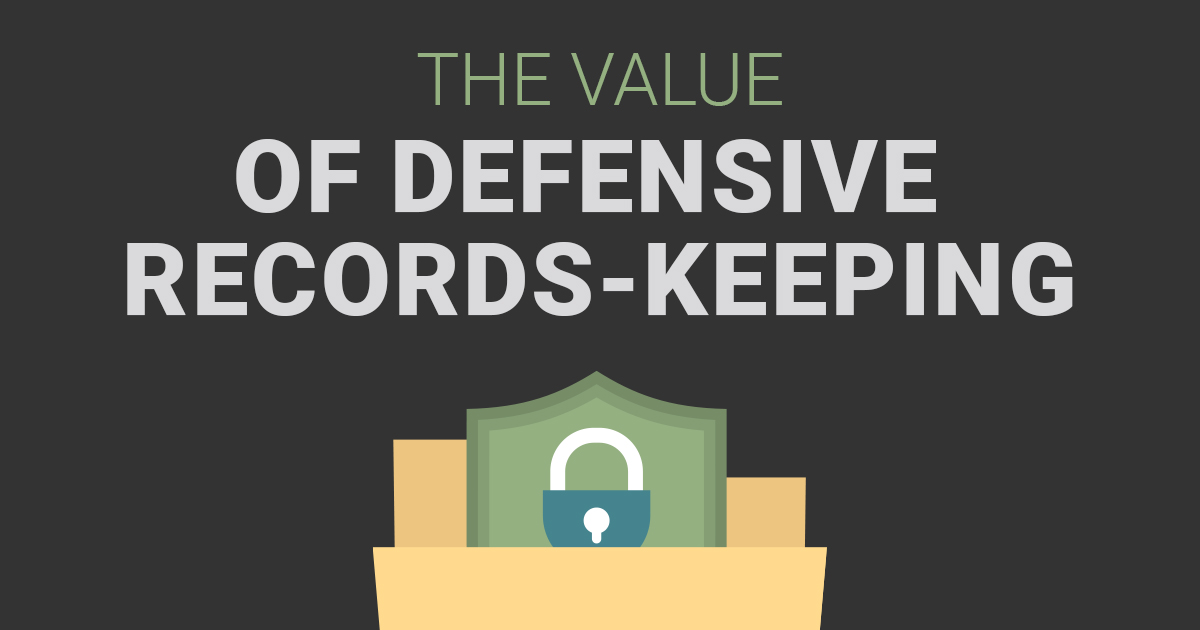
Leaders from George Washington to Little League Coaches have inspired action with something akin to the idiom, “the best offense is a good defense.” In our two decades of auditing medical records, we’ve found this to be true. Defensive documentation can provide a wealth of intelligence into an organization’s clinical operations, provide opportunities for improvement, and help stave off unnecessary risk.
What is Defensive Documentation?
Defensive documentation, or the thorough, timely documentation of care to demonstrate quality standards have been met, is an increasingly vital practice for medical professionals.
Despite its name, defensive documentation is, in our view, neutral. What do we mean by that? Through our work on both plaintiff and defense matters, we have found that maintaining proper and complete records to support the level of care given in a healthcare facility is non-negotiable. Medical records will be used to help litigation claims – either for you or against you. Without defensive and thorough record-keeping, organizations expose themselves to unnecessary risk.
Consistent, thorough documentation may feel like one more thing on an ever-growing task list for healthcare providers, but failure to do so can have serious consequences. In addition to opening the organization up to the risk of litigation, contracts could be at stake, as Tenet Detroit recently experienced.
How Can Defensive Documentation Help?
Let’s explore how defensive documentation can support healthcare organizations. Below we look at three examples and how documentation, or lack thereof, can impact the legal outcomes.
The Scenario: A Covid-19-related wrongful death liability assessment noted incomplete documentation of oxygen saturation levels.
The Impact: Lack of proper record-keeping may result in an inability to support that the facility promptly detected, triaged, and isolated potentially infectious patients. With defensive documentation practices in place, the organization can double-check that documentation is complete and allow for quick follow-up to help keep holes in the record to a minimum.
The Scenario: EMR Assessments can make it difficult to prove individualized, person-centered care is being delivered.
The Impact: In this example, we reviewed a patient’s records receiving chronic opioid therapy. While their exam during an outpatient visit seemed reasonably comprehensive at first glance, upon further investigation, we found the physical assessments for four separate visits were identical – down to the punctuation missteps. We have seen this in acute care records as well, where multiple specialists come in and out daily with very little change in their notes. It’s hard to defend absolutely no change in a hospitalized patient in 24 hours. This is where proactive chart QA can identify and get ahead of activities that put the patient – and the organization – at risk.
The Scenario: A mid-sized regional skilled nursing facility faced an Immediate Jeopardy assessment pending related to alleged sub-standard wound care provided to one of their long-term residents over a ten month period. The resident had 13 wounds, and there were significant documentation gaps.
The Impact: With electronic medical records, particularly in long patient stays, the documentation is often “there”; it’s just a matter of actually putting your finger on it – which may sound easier than it is. While the CMS Survey team was still on site, the Med Law nurses were able to work with the regional nursing team and IT to comb through the EMR. They put a package together for the survey team’s consideration with 1500 pages of medical records and a memo of findings that supported the care the facility provided to the resident. This was a scavenger hunt that paid off because the documentation, for the most part, WAS there. Although the facility ultimately didn’t avoid the Immediate Jeopardy assessment, the work done to locate the “missing” medical records significantly reduced the period of non-compliance, saving the facility hundreds of thousands, if not millions of dollars in penalties. What you need for your case may be in the medical record somewhere. It just may take a 2nd or 3rd set of eyes to find it.
Our Recommendation
Facilities should review their incident documentation practices and minimally audit the chart when significant incidents occur. The medical record needs to objectively reflect details surrounding events before, during, and after patient events. If the story of what happened is only outlined in a document that’s not discoverable by plaintiffs, it will make defending the care provided even more difficult. This is a problem when care issues arise, and the only place the staff documents details of what happened is outside of the medical records in a QA privileged, non-discoverable file. Moreover, non-mandatory forms that run the risk of destruction over time may hold clues to the details of an incident, leaving holes in the medical record.
Often, the issue boils down to a missing key record, requiring the defense to try and recreate the story from ancillary documents or records that contradict one another, requiring the time and expense of a deeper forensic analysis to determine what actually happened in the case.
Seems Like an Obvious Choice
While most see the inherent value in defensive documentation, the practicality of implementing it can be hard. Leadership teams are faced with not enough time, not enough people, or not having the right expertise to assign to this task. If you have the right resources on your team, giving them adequate time to review records and identify one or two important holes can add value to a case and potentially provide opportunities to improve care delivery upstream. In the case of litigation, an early review can save your organization time and resources by allowing you to properly value a potential claim before it gets too far down the road.
While healthcare organizations continue to face staffing shortages, it may help to bring in outside support. Med Law Advisory Partners has decades of experience auditing medical records for litigation support and proactive health system improvement. If you’re ready to discuss how your organization could benefit from defensive documentation, Schedule a chat with Med Law Advisory Partners today.
Med Law Advisory Partners Gains Two New Certifications
Wednesday, June 29th, 2022
Med Law is pleased to announce we have obtained our certification as a Women’s Business Enterprise (WBENC) as well as a Women-Owned Small Business (WOSB).
Women-owned businesses make up 42% of all businesses in the United States, according to WBENC. Though this is a significant number, notable disparities still exist in revenue and capital between women-owned businesses and others. WBENC seeks to make meaningful strides in equality for women-owned businesses. Similarly, small businesses are a vital part of our economy, yet many struggle to maintain operations for more than five years. We recognize the commitment to supplier diversity that corporations and government agencies embrace today. We believe a strong network of small businesses supports our communities.
As we recently celebrated our 20th anniversary, we recognize the growth we have been able to achieve and the results we have delivered for our clients. We want to continue that growth and performance well into the future. These certifications will assist us in our efforts. This is an exciting achievement for our company and especially our founder, Alicia Davis. Alicia has expressed her excitement saying, “I’m proud to join the ranks of entrepreneurs and leaders that have achieved WBENC and WOSB certifications. While we’ve operated as a woman-owned business for the past twenty years, this shows there is always room to keep evolving.”